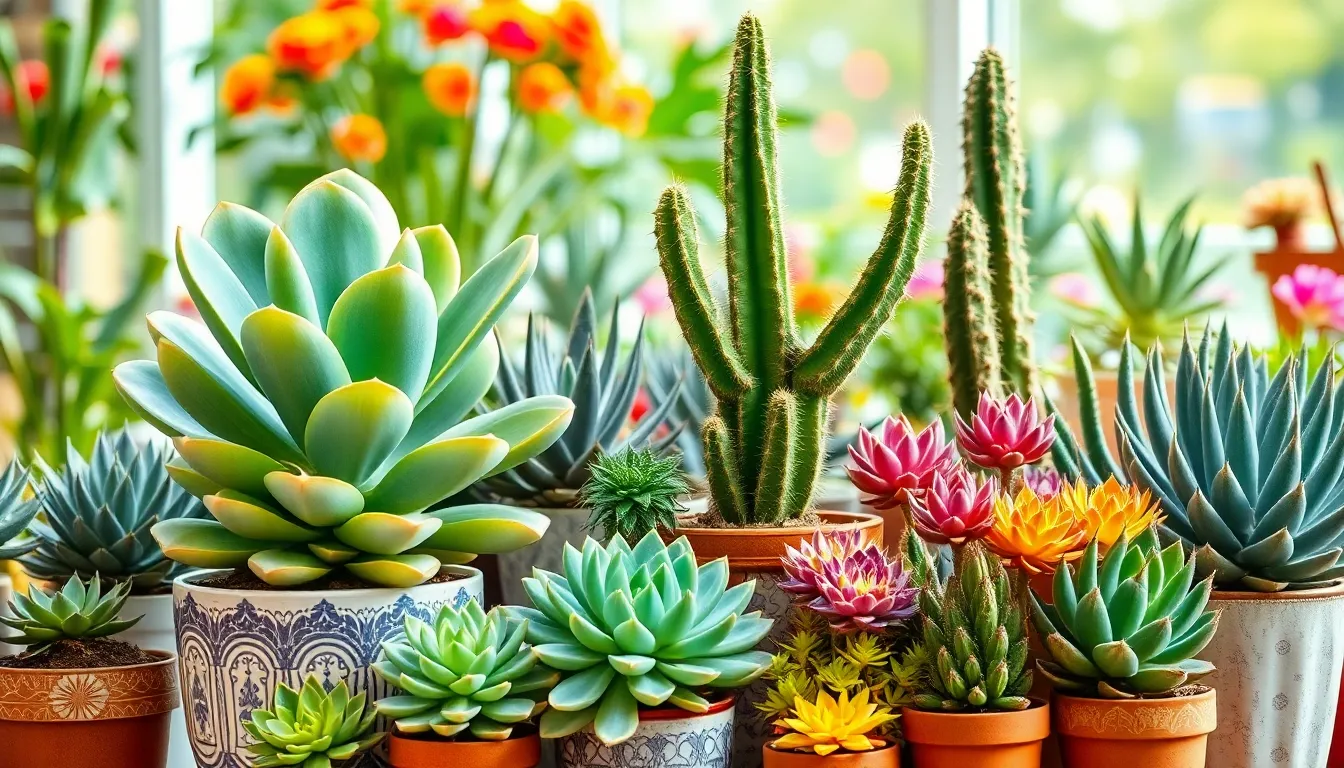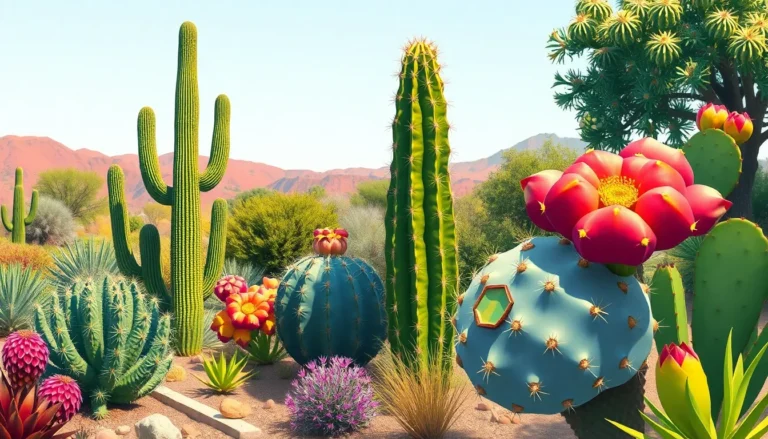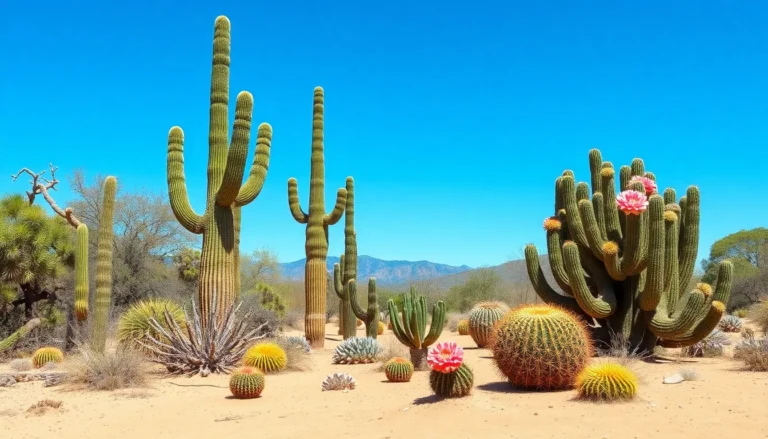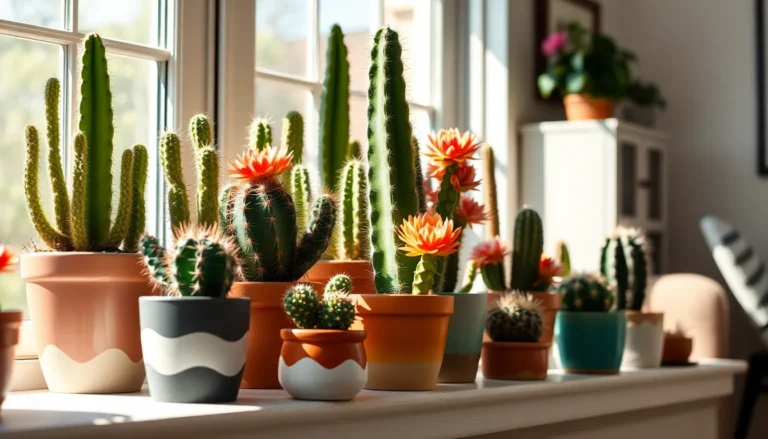Succulents and cacti—two plant types that often get mistaken for one another. They both flaunt their unique shapes and vibrant colors, making them the darlings of the plant world. But are they really the same? Spoiler alert: not quite! While all cacti are succulents, not all succulents are cacti. It’s like saying all cats are pets, but not all pets are cats.
Diving into this green conundrum reveals fascinating differences that even the most seasoned plant parent might not know. Whether you’re a plant novice or a seasoned pro, understanding these distinctions can elevate your gardening game. So grab a cup of coffee and get ready to impress your friends with your newfound botanical wisdom—because who doesn’t want to be the life of the plant party?
Are Succulents Cacti
Understanding the differences between succulents and cacti helps clarify common misconceptions. Both plant types share similarities but possess distinct features.
Defining Succulents
Succulents encompass a broad group of plants that store water in their leaves, stems, or roots. These adaptations enable succulents to thrive in arid environments. Species like aloe vera and jade plants fall into this category. Typically, succulents showcase thick, fleshy parts that facilitate moisture retention. Such plants excel in various climates, making them popular choices for indoor gardening.
Defining Cacti
Cacti represent a specific subset of succulents characterized by unique traits. All cacti feature specialized structures called areoles, from which spines and flowers emerge. Common examples include the well-known saguaro and prickly pear. These plants possess adaptations that minimize water loss, making them resilient in dry climates. Cacti often exhibit a range of shapes and sizes, attracting enthusiasts to their diverse appearances.
Key Differences Between Succulents and Cacti
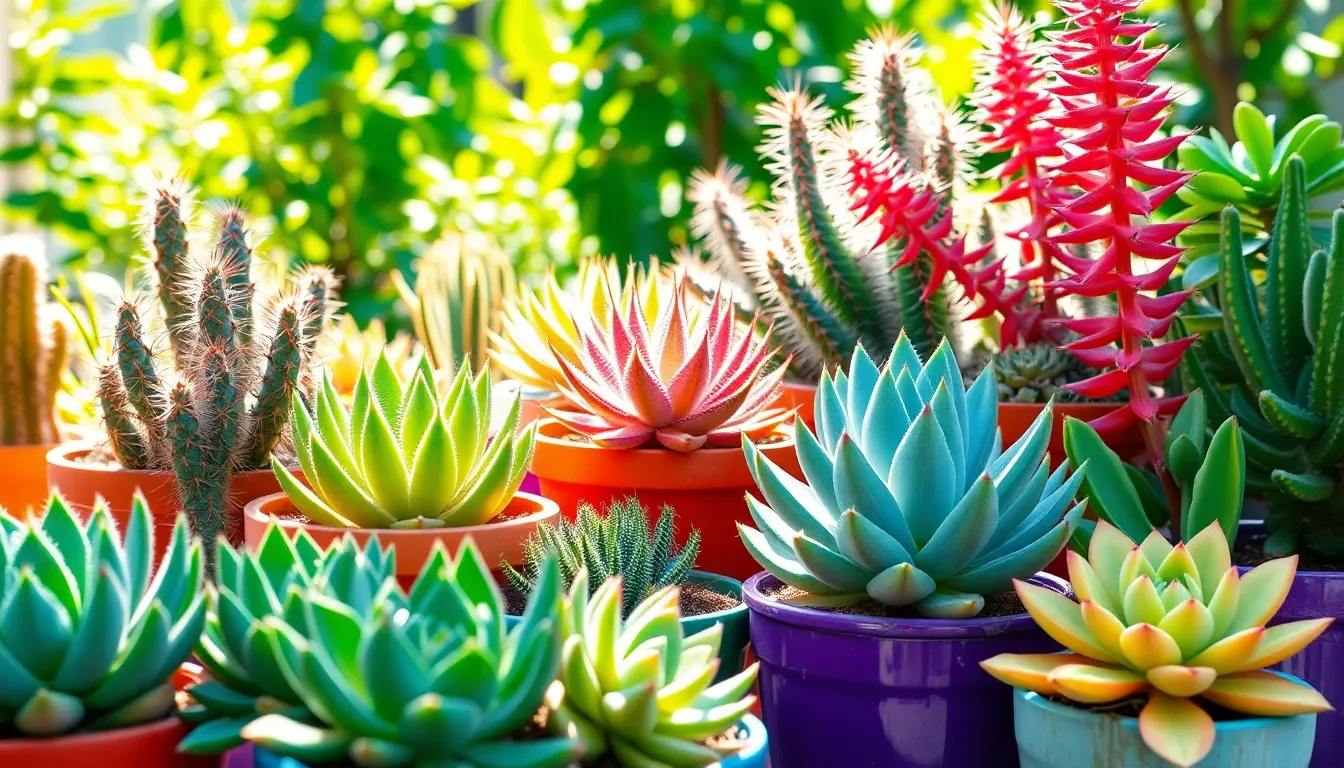
Succulents and cacti exhibit distinct characteristics that set them apart. Understanding these differences enhances gardening knowledge.
Structure and Adaptation
Cacti develop unique structures called areoles, which produce spines and flowers. This feature is exclusive to cacti and aids in protection and reproduction. They typically possess thicker stems that store water. In contrast, succulents may have various storage adaptations, often found in leaves, roots, or stems. Examples like jade plants showcase broad, fleshy leaves. These adaptations give succulents versatility across different environments, enabling survival in diverse climates, including indoor settings.
Habitat and Growth Conditions
Cacti thrive in arid, desert environments where water scarcity is common. Many display adaptations to minimize evaporation, such as waxy coatings on their surfaces. Succulents, on the other hand, enjoy a broader range of habitats, from rocky outcrops to rainforests. They prosper in well-draining soil, though some varieties tolerate more moisture compared to cacti. For optimal growth, both plants require adequate sunlight, with cacti favoring direct sun while succulents prefer bright, indirect light.
Common Misconceptions
Misunderstandings about succulents and cacti often arise. Many assume all succulents classify as cacti due to their shared ability to store water. However, this isn’t accurate; while every cactus is a succulent, not every succulent qualifies as a cactus. Succulents encompass a vast array of plants, including species like aloe vera and jade plants. These plants adapt to conserve moisture in various environments.
Are All Succulents Cacti?
All cacti belong to the succulent family, but differences exist. Cacti specialize in unique features such as areoles that produce spines and flowers. Succulents, meanwhile, exhibit diverse forms without these distinct structures. Notable examples of succulents outside the cactus family include sedums and agaves. Understanding this differentiation clarifies the misconception.
Historical Context of Classification
Historical classification methods further contribute to misconceptions. Plant experts have grouped cacti within the succulent category for their water-storing abilities. This classification stems from their shared adaptations for surviving arid conditions. Over time, botanical studies defined cacti based on specific criteria, establishing them as a distinct group. Such historical context emphasizes the need for clarity when discussing succulents and cacti.
Popular Types of Succulents and Cacti
Succulents and cacti boast a variety of fascinating species, each with unique adaptations. Identifying these plants enriches one’s understanding of their care and habitat.
Examples of Succulents
Aloe vera thrives in many homes, known for its medicinal properties. Jade plants, with their thick, glossy leaves, make popular indoor choices. Sedums exhibit numerous varieties, ranging from ground cover to upright types. Agaves, often utilized in landscaping, showcase striking rosettes. Euphorbias offer diverse forms, some resembling cacti without being true cacti. Each succulent type features fascinating adaptations for water retention.
Examples of Cacti
Saguaro cacti stand tall in desert landscapes, reaching impressive heights. Prickly pears, recognized by their flat pads, often produce colorful fruits. Barrel cacti exhibit round shapes, storing water in their thick stems to survive harsh conditions. Christmas cacti, unlike their desert counterparts, bloom during winter and thrive indoors. Fishhook cacti display unique hooked spines, enhancing their adaptation to arid environments. Each cactus species showcases remarkable resilience and beauty.
Care and Maintenance
Caring for succulents and cacti involves understanding their specific needs. Both plant types thrive under certain conditions that promote their health and growth.
Watering Needs
Succulents require less frequent watering in comparison to many houseplants. Soil should dry out completely between waterings, typically every 2-3 weeks during warmer months. Overwatering leads to root rot, which poses a significant risk. Cacti, meanwhile, may need even less water, especially during dormant winter months. Watering once a month suffices, and ensuring well-draining soil enhances their resilience. If the plant becomes wrinkled, it indicates a need for water. Observing soil moisture levels helps prevent over or underwatering issues.
Light Requirements
Bright, indirect light works best for succulents, offering them the energy to thrive. East or west-facing windows often provide ideal sunlight conditions. Cacti, in contrast, prefer direct sunlight, often flourishing in southern-facing windows. Insufficient light can lead to leggy growth or discoloration. Achieving balance in light exposure is vital for both plant types. Rotate pots occasionally to ensure even light distribution. Proper light ensures these plants display their vibrant colors and unique shapes.
Conclusion
Understanding the distinction between succulents and cacti enriches one’s appreciation for these unique plants. While all cacti are indeed succulents, not every succulent falls under the cactus category. This knowledge helps plant enthusiasts make informed choices for their gardens and indoor spaces.
By recognizing their specific needs and characteristics, gardeners can ensure healthier plants and create thriving environments. Whether opting for the striking presence of a cactus or the diverse beauty of succulents, both types offer remarkable resilience and charm. Embracing this knowledge can lead to a more fulfilling gardening experience.

